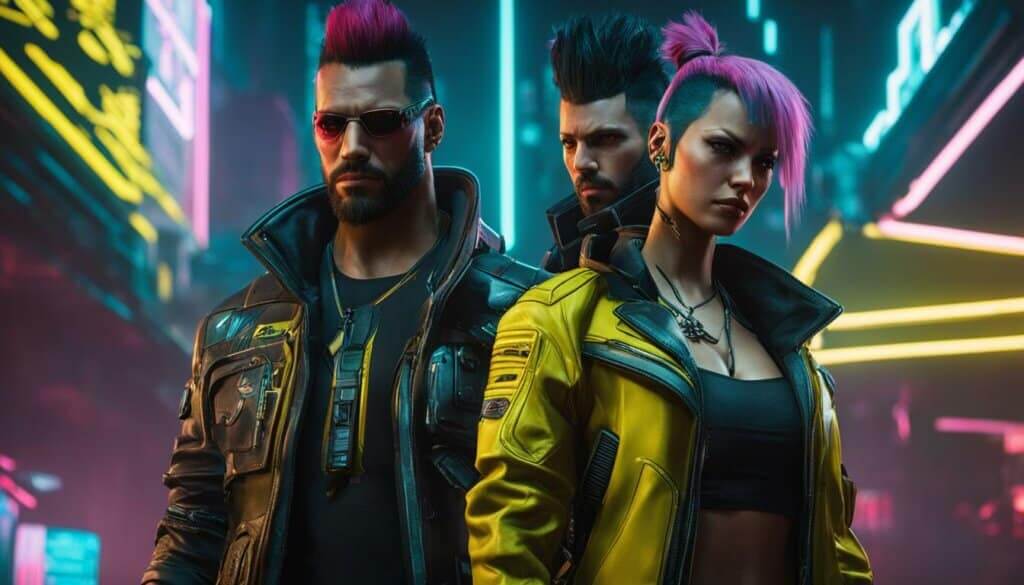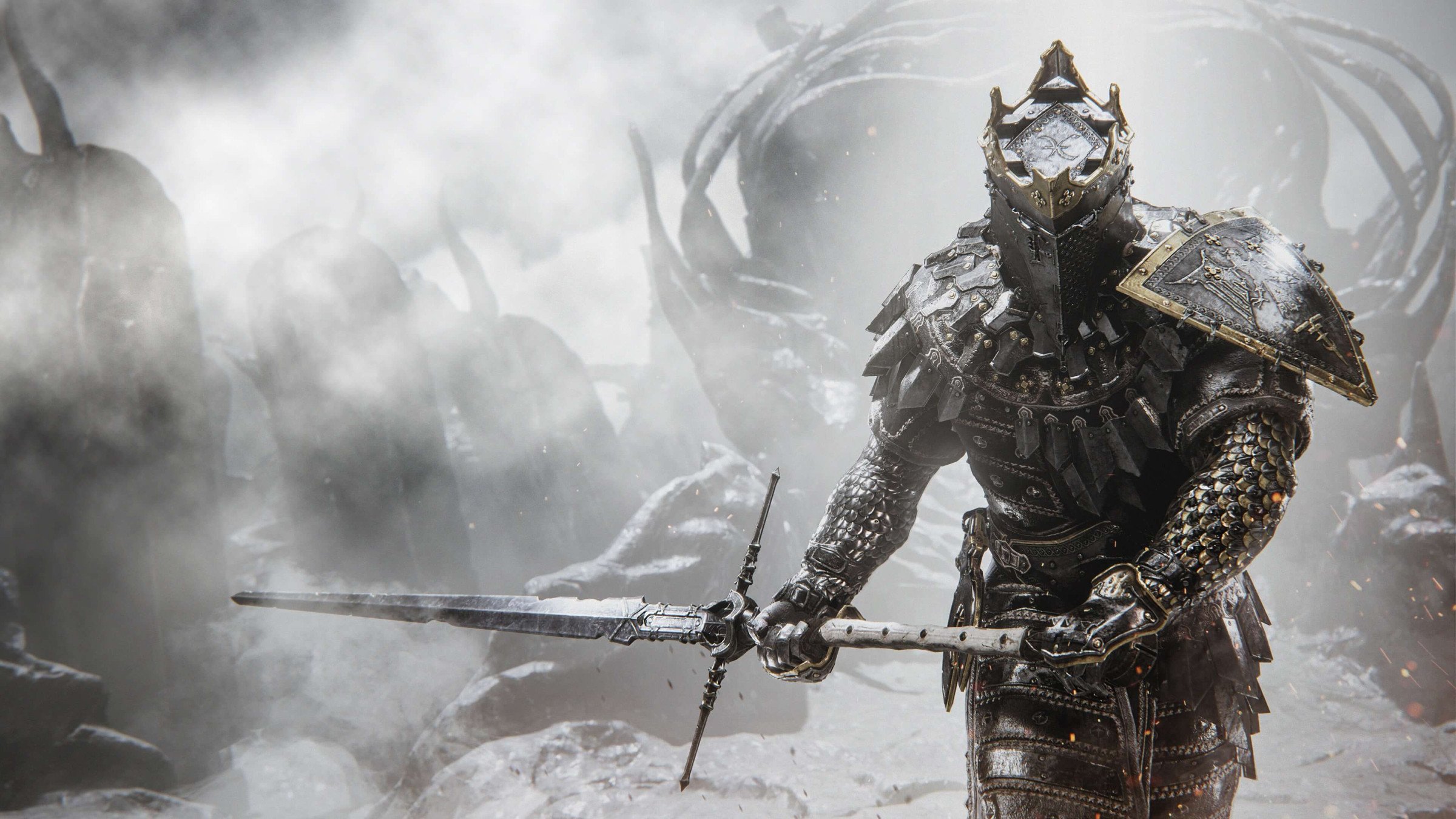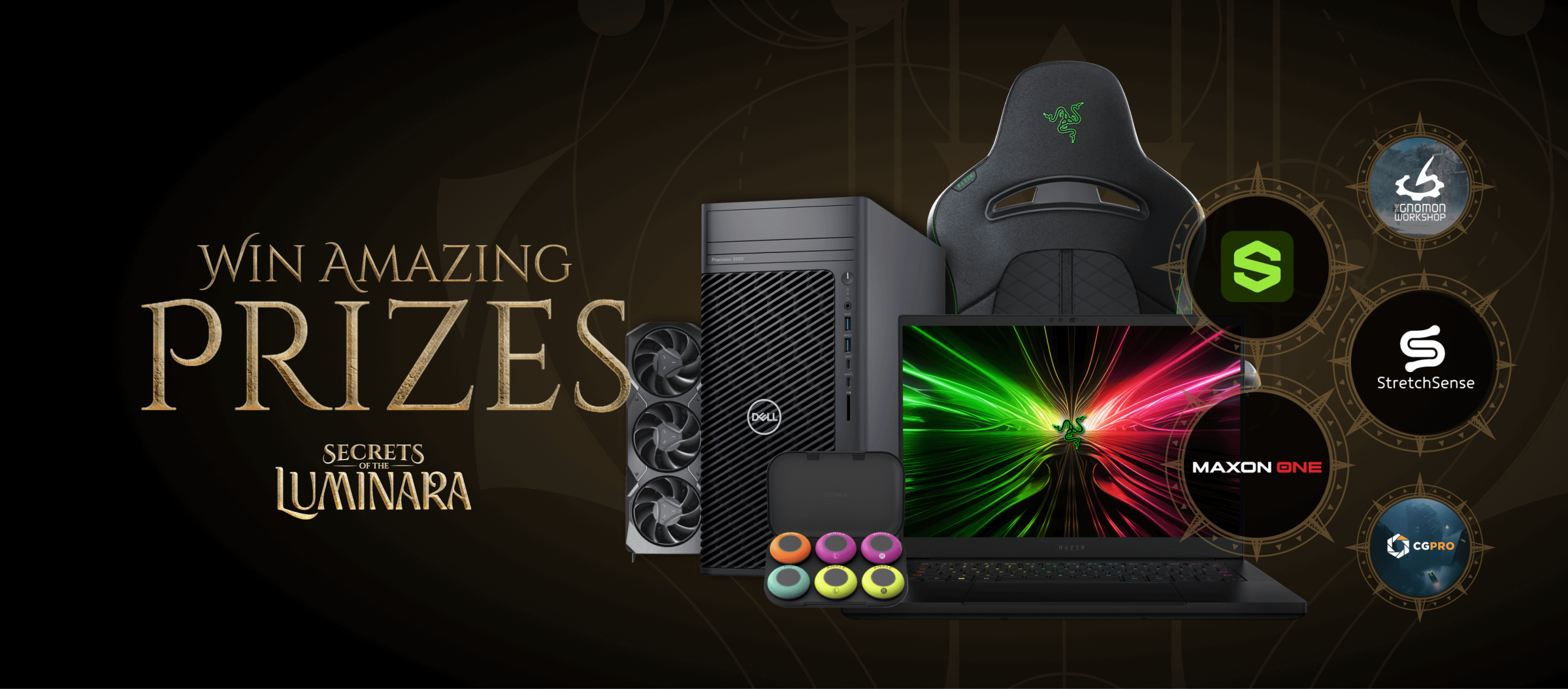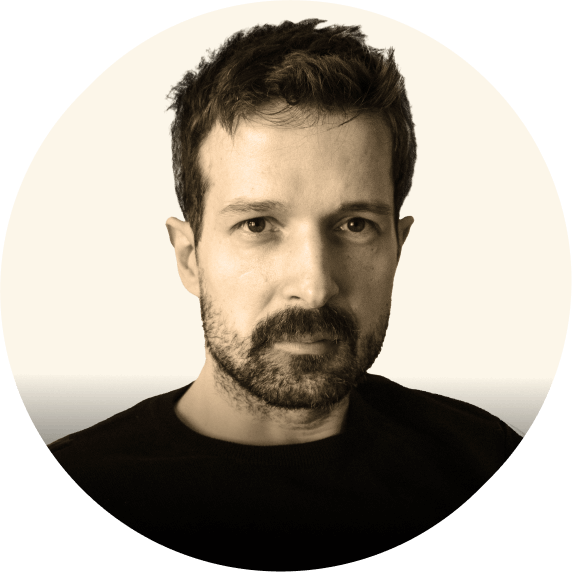
With a background that bridges the worlds of film, commercials, and game development, Jakub Knapik is a true innovator in visual storytelling. As the VP of Art and Global Art Director at CD PROJEKT RED, Jakub leads the creative vision for groundbreaking titles like Cyberpunk 2077 and The Witcher. His journey from VFX to gaming is marked by a dedication to collaboration and an embrace of new technologies that continue to shape the future of digital art.
In this interview, we explore Jakub’s insights on the evolving landscape of game design, the challenges of balancing creative vision with technical advancements, and the qualities he looks for as a judge in the Secrets of the Luminara challenge. Join us as we dive into Jakub’s approach to visual innovation and discover how he inspires the next generation of artists!
Jakub, thanks so much for sitting down with us, we know our community is so excited to learn from your incredible insights! To kick this off, you’ve worked on a large range of projects, from film and commercials to game development. What drew you to the gaming industry, and how has your film background influenced your work at CD PROJEKT RED?
I have always perceived film visual effects as a field where creativity meets imagination and an almost inventor-like technological mindset. Watching films and figuring out new ways to create scenes that were impossible before was precisely what made my heart go crazy fast and pulled me to countless sleepless nights. At some point, I noticed that games have similar ambitions: to provide an incredible experience for the players and one that would break certain artistic and technical boundaries along the way. I realized that this could be a new thing for me, a new, inspiring field. Back then, I was exploring my comfort zone a lot, directing a bit, exploring some creative projects as a freelancer with my heroes in the music industry and science field, and often switching creative roles while making it. On that brave wave of novelty, I felt now or never. I got a call from CDPR and decided to step into the unknown.
As Global Art Director, you oversee the art for major projects like Cyberpunk 2077 and The Witcher. How do you balance the artistic vision across such complex projects, and what role does collaboration play in bringing these worlds to life?
Working with massive and loved IPs is a privilege. As an Art Director at heart, the most challenging part for me is understanding the foundations and legacy of those IPs, the vision that the projects' Art Directors develop for the future, and potentially carefully separating it from mine. With that, I can use my broader perspective and become a creative partner to them, as well as a link with other global perspectives, like technology, business, and marketing. It may be too early to call the impact of my role. Still, I aim to help make some trickier project art decisions, supporting our projects in developing their healthy individual visual signatures while maintaining phenomenal overall art quality and potentially a studio fingerprint. Above all, the benefit of my work is the ability to support and hopefully impact the work of the most talented Art Directors, Art teams, and Dev teams I ever worked with.
You’ve been part of some highly ambitious projects. How do you stay inspired and creatively motivated while working on large-scale productions that often span years?
This is a great question and an exciting experience for me. In the past, I always worked on much shorter projects that never lasted longer than a year. When I joined CD Project Red, the first thing that shocked me was how committed everyone was to the Witcher brand. I have never seen such passion and knowledge within a group that would be so focused on a project theme and its world-building. And I say that as a die-hard fan of Witcher World, and I read all the books at least twice each. While working on a Cyberpunk, I experienced firsthand all the phases of being hooked to the IP, from initial excitement through understanding, being tired and worn out to finally living and breathing the world created with the game with every cell of my body. It is remarkable how committed one can become to the world of the project. It requires a certain mindset to stay fresh and be motivated to push forward. To feel a hunger to explore new ideas and look for this new visual excitement. I guess I always had it deep inside me; that was my fuel throughout my career, and I see this as a common factor with the people I work with.
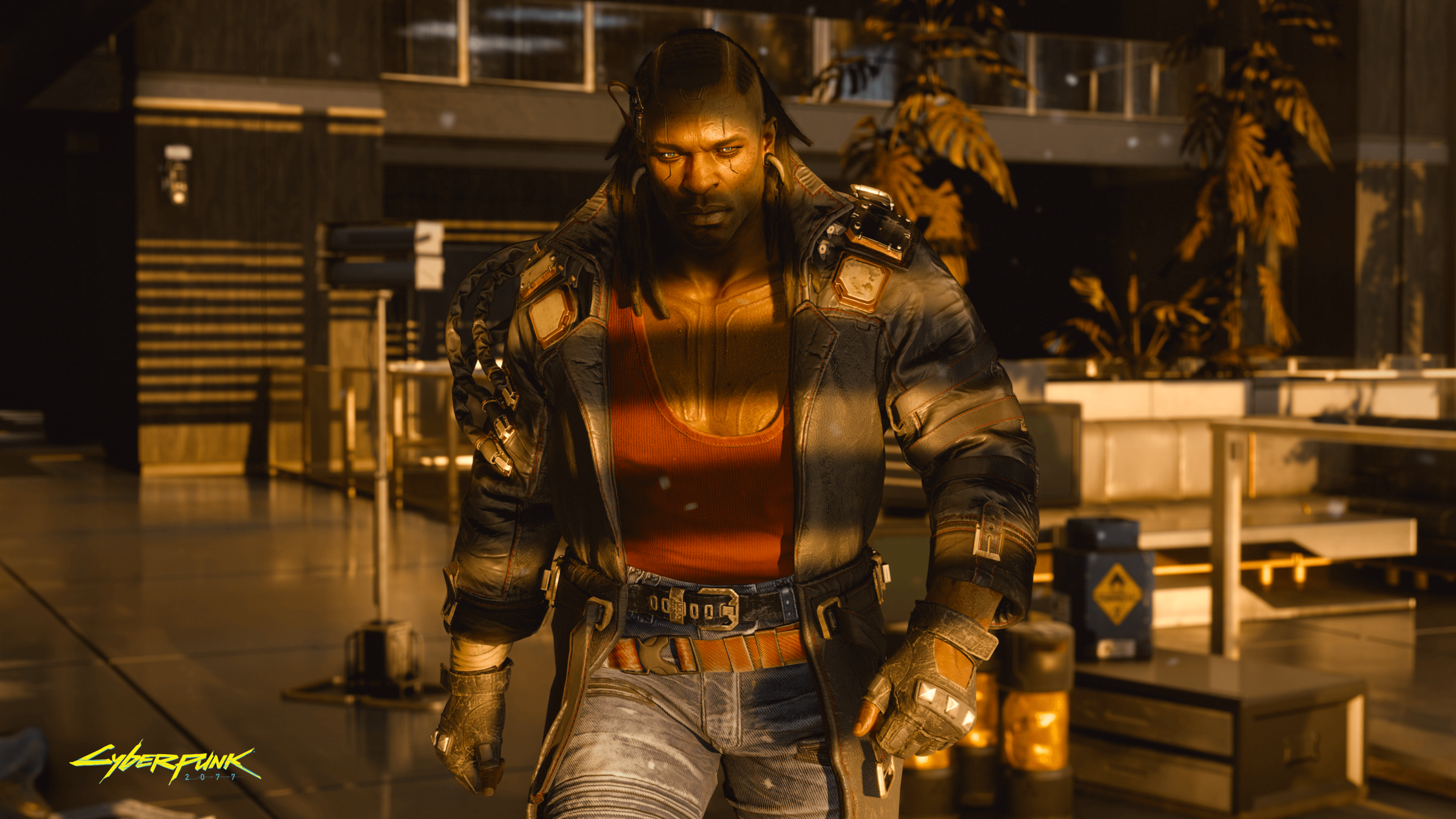
CyberPunk 2077 / CD Projekt Red
Technology plays a significant role in your work. How do you approach the integration of new technologies in game development, and what recent advancements have had the biggest impact on your creative process?
Technology has always been my superpower. Probably every Art Director is different, and it all depends on the art roots, but because my background is being a film Visual Effects supervisor and a generalist, I gained specific ways of thinking and maybe intuition that helped me to work with technical teams and hopefully bring value to their work. When I joined CD Projekt RED after just a few months, I got my impostor syndrome to the test as I moved to work and creatively lead the development of our newly created Red Engine in the Lighting and Rendering field. I think this was by far the most challenging technical task of my life, as I had to learn how real-time engines work very quickly, what are the main problems in the game we plan to make, and how my experience from working in the film using offline tools would be helpful. From a lighting and rendering point of view, the engine was almost non-existent then, and we had the first demo in the making. The stress was unbelievable, but eventually, we managed to bring the first Cyberpunk E3 demo to the world, and till today, I consider this to be one of the most memorable moments in my career. That created a special bond between me and our tech teams that grew into the future.
Sometime before the release of Cyberpunk 2077, we joined efforts with the Nvidia team. We realized we have an excellent track record of cooperation and shared the same ambition to bring film-like cutting-edge technology to the players. Rationally, I hoped my experience using raytracing in the film industry could support the process, as it was a tricky time in our game development, but emotionally, that was also the topic that fueled my absolute excitement. This new chapter in our relationship let us release the game with one of the most robust raytracing implementations of that time, and we did not end there alone. Later, we brought the Path Tracing rendering solution with a Technology Preview patch to the players. The mode used in modern film and animation rendering, which typically takes many hours to compute a single 2k frame, in Cyberpunk 2077 worked in four times more screen resolution at more than 60 frames per second, rendering one of the most complex and dense games on the market. That was a revolution in what games could do with modern hardware—the one to expand the player's experience and finally bring that film fidelity to their monitors. It sounds like a massive PR slogan, but I am thrilled and humbled to be part of that. In a way, it was an idea I always dreamed of joining the CD Projekt RED.
Reviewing portfolios is both an art and a science. What qualities do you believe make an artist’s portfolio truly memorable, and how do you think clarity of vision plays a role?
It is always very challenging to review portfolios as it's always tough to separate yourself and your personal art bias from the expectations towards the Art you review. I will not surprise anyone by saying that it is always great to have a more focused and organized portfolio that tries to show the best story about the Artist and present his toolset and skillset, filtering mostly the best examples only. Saying that, there is one element that always stands out regardless of the discipline: the clarity of an art idea presented. After many years, I learned that that is the most challenging and often proof of a mature, intentional art process. Be it an asset, a composition of assets, a scene, concept art, or even special FX, if I can read through the intention behind it, there is a dialog between me and the Art presented. These days, with new tools and emerging technologies, this ability to synthesize ideas will differentiate the art content. Portfolios often show a variety of artwork, but if I can connect with some pieces and the ideas behind them, I know there is a particular artist behind them, one I would love to go on a creative journey with.

Breaking into the industry is no small feat, especially with the rapid changes in technology and team structures. What advice would you give to aspiring artists about adapting to this evolving landscape?
That is an extensive question, and it depends on what part of the industry we consider. We are facing another transformation of our industry, both on its business side and, most recently, on the technological side, and that will impact the skill sets that are most desired. As it was a general trend to see more and more specialized skills needed by the big studios in recent years, ones that dive deep into their disciplines, my intuition tells me that now more and more broad and complete understanding of the whole process with the possibility to shift roles would be more and more attractive. The reason for it is that I guess the future will bring more agile and smaller teams delivering more significant projects, and skills like communication, the ability to solve problems, understanding of all the building blocks of the project, and the whole creative meaning behind the brief will be more and more critical. So, if that thesis is correct, I would advise, apart from gaining Art skills and good work habits, maybe by starting in some outsource studio working on some attractive titles with experienced art leads, to consider starting in any team, even a tiny studio, purely to gain experience in a broader team structure. That broader perspective will be the much-needed experience in those multidisciplinary teams, and I foresee it being a new way.
For those starting out in 3D, the learning curve can be steep. What foundational tips would you offer that go beyond technical skills, perhaps focusing on mindset and collaboration?
I don't think I will shock anyone with my proposed tips, but let me try:
1. Find a safe support community, such as a forum, where you can get good, honest feedback and constant motivation to push forward. Having more senior artists can be a massive help in getting guidance.
2. Start with small goals, but always try to push them to the finish line. Going through complete iteration cycles allows you to get the most out of the process, but you also get to judge the outcome and reflect on the decisions that led you there.
3. Try to gain more background on classical design principles, composition rules, and color theory, even as a side pet project. I know that opinions on the need for this background vary, but the truth is that after many years of back-and-forth, you will end up using those rules anyway, so why not start with the proper knowledge first?
4. 3D is still a very technical process, which is why it's so mesmerizing and beautiful. But draw, paint, sketch, and even take photos. Any activity like that will help you train your brain to see things better and quickly shift from big-picture perception to detail analysis at any moment. This is like taking your imagination to the gym. It will also allow you to step back, take a break, and gain perspective.
5. One incredible revolution in the last few years has been the enormous growth of tutorials and learning materials, allowing new artists to quickly learn independently. However, a fantastic way to utilize those new skills and lift them off is by doing a small art project with other artists. That way, You can learn many new things, but most importantly, focus on certain parts of the process while communicating with the team. I think that helps you gain a certain critical distance from what you do; it enables you to take a few steps back, judge what you worked on with other artists, and plan the next steps. This process grows in you and stays for years to come.
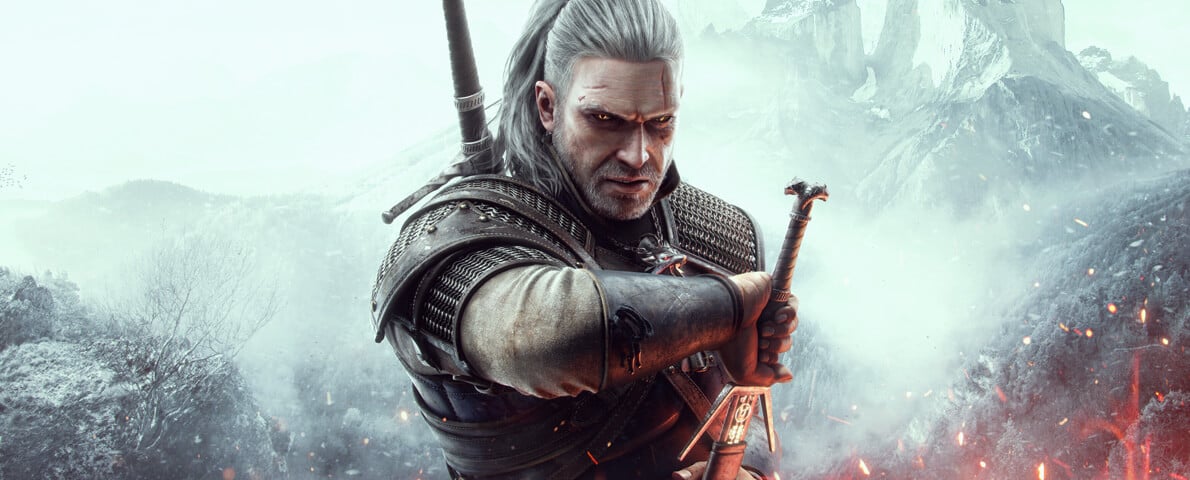
The Witcher / CD Projekt Red
Your role as a Global Art Director offers a unique blend of creativity and innovation. What elements of your job do you find most rewarding, particularly when it comes to exploring new artistic techniques?
My job has changed recently, and as a VP and Global Art director, I am learning to work with our projects and Artists using a different lens, but when I reflect on myself in a broader picture and include my more hands-on work on projects, I would say that I always loved to mix Art with some creative use of technologies that were new to me, or ones that were just new in general. That adventurous exploration of the unknown brought me to VFX in the first place. That blend is the bit I love the most. I can connect deep emotions radiating from colors, compositions, and visual storytelling with a feeling of being a discoverer scouting new worlds. This always excited me the most, to the point where I often create new projects using different tools, creative processes, or even changing industries occasionally. I think that made me treat my work as pure fun. There were nights when I could not sleep, just waiting to return to the projects I had left at the office. I never treated those moments as work. I was just privileged to get paid for it.
The Secrets of the Luminara challenge invites artists to explore new ideas. As a challenge judge, what are you looking forward to in terms of artistic expression and storytelling from the entries?
I always love to look at images that allow me to dive into their world and immerse myself in their rules and visual storytelling. Any visual deviation from reality, the world we know well, is some sort of comment, story, or dialog with the viewer, me. It is exciting to see images that coherently use that to tell interesting stories, wrapped up in some unique visual signatures, but most importantly, I would love to see artists having a blast while creating them, as that almost always shows.
Finally, what's your favorite mythical adventure movie?
It will be super easy for me. It will be the animated TV series Avatar: The Last Airbender. I adore that show and have watched it with my son a gazillion times.
Thank you, Jakub, for taking the time to share your incredible journey and insights with us! Your blend of creativity and technical expertise, from VFX to groundbreaking game design, is truly inspiring. We're excited to see how your innovative approach continues to shape the future of digital art and gaming. Your insights for up-and-coming artists are invaluable, and we appreciate your guidance for the next generation of creators. And of course, thank you for joining us as a judge in the Secrets of the Luminara challenge! We can’t wait for you to see the community’s imaginations and skills at work. Until next time, happy KitBashing!
Interview conducted and article written by Carmen Moreno.

